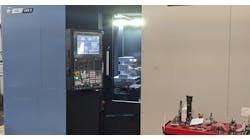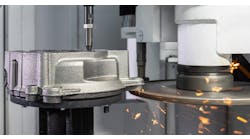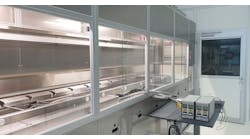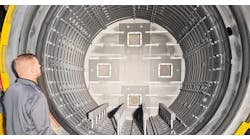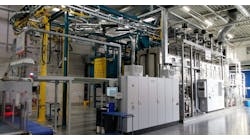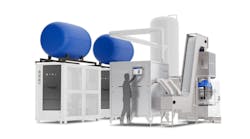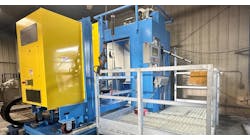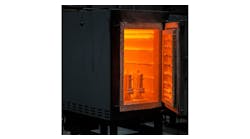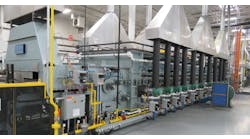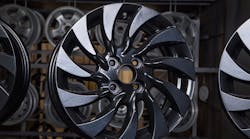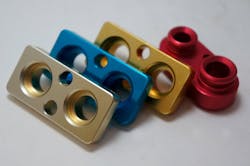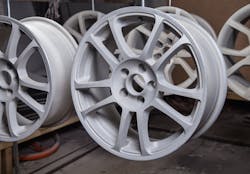Aluminum diecastings are indispensable in automotive and aerospace industries, among others, as they offer a combination of strength, lightness, and thermal efficiency. However, exposure to moisture, chemicals, and temperature fluctuations accelerates corrosion in aluminum, compromising the diecastings’ performance and longevity.
To offset those issues manufacturers adopt advanced coating technologies that create a protective barrier against environmental damage. These coatings not only enhance corrosion resistance but also improve wear resistance, improve aesthetics and durability, and allow diecast aluminum components to withstand demanding conditions – and even expand their range of applications.
Understanding corrosion
Although aluminum naturally forms an oxide layer that offers some protection against corrosion, it is not sufficient for long-term exposure to harsh conditions. Factors that contribute to corrosion in aluminum diecastings include:
• Electrochemical reactions: When aluminum comes into contact with dissimilar metals, galvanic corrosion may occur.
• Moisture and salts: High humidity, salt spray, and marine environments accelerate pitting and surface deterioration.
• Chemical exposure: Acids, alkalis, and industrial chemicals break down the oxide layer, leading to corrosion.
• Thermal cycling: Repeated heating and cooling may induce microcracks, allowing moisture and contaminants to penetrate the component structure.
To combat these issues manufacturers apply protective coatings that create a barrier between the aluminum surface and corrosive elements.
Advanced coating technologies
Powder coating is a highly effective method for protecting aluminum diecastings against corrosion while offering superior durability and aesthetics. The process involves applying a dry powder electrostatically to the component, which then is cured under heat to form a uniform protective layer. The advantages of powder coating include:
• Excellent corrosion protection. Powder coating forms a dense, impermeable layer that resists moisture and chemicals.
• Enhanced durability. It provides superior scratch and impact resistance.
• Eco-friendly. It contains no volatile organic compounds (VOCs), making it a sustainable choice.
For manufacturers seeking a high-performance, long-lasting solution, industrial powder coating is a preferred option due to its balance of protection and cost efficiency.
Anodizing enhances the natural oxide layer of aluminum through an electrochemical process, making it thicker and more corrosion-resistant. This coating is particularly effective in applications requiring high wear resistance and aesthetic appeal. Key benefits of anodizing include:
• Improved corrosion resistance. Anodizing is an ideal process for corrosion-resistant treatment for aerospace and marine applications.
• Hard surface finish. It also provides additional wear resistance.
• Color customization. Diecastings can be dyed in various colors for branding or aesthetic purposes.
While anodizing is effective, it is less suitable for applications where aluminum components will be exposed to highly alkaline environments, as it is vulnerable to chemical attack.
E-Coating, or electrophoretic coating, is widely used for aluminum diecastings for automotive and industrial applications due to its ability to provide uniform coverage, even on complex geometries. The process involves immersing the component in an electrically charged paint bath, providing thorough protection. E-coating is effective due to:
• Uniform protection. Coats even recessed areas that are difficult to reach with spray coatings.
• Superior adhesion. Works well as a primer for additional topcoats.
• Resistant to chemicals and moisture. Provides strong protection against rust and corrosion.
E-coating is often combined with powder coating or liquid paint for enhanced protection in demanding environments.
Ceramic coating – for applications requiring extreme corrosion and heat resistance – adds surface resilience to diecastings used in industrial settings where conventional coatings may degrade. Ceramic coating are chosen for:
• Superior thermal stability: Can withstand extreme heat without breaking down.
• Exceptional corrosion resistance: Protects aluminum components from saltwater and harsh chemicals.
• Low friction: Reduces wear and enhances performance in moving parts.
Although ceramic coatings are highly effective, they can be more expensive than other protective options and may not be necessary for all applications.
Selecting the right coating
Choosing the optimal coating depends on the performance requirements and environmental conditions in which the diecast aluminum components will operate. The critical factors to consider include:
Exposure conditions
- High humidity or marine environments? Anodizing or powder coating is ideal.
- Extreme heat or chemical exposure? Ceramic coatings provide the best protection.
- Frequent contact with industrial chemicals? E-coating offers excellent resistance.
Wear resistance
- Components subject to frequent abrasion may benefit from anodizing or powder coating.
- Moving parts requiring low friction should consider ceramic coatings.
Aesthetic and branding needs
- If visual appeal is important, powder coating and anodizing offer color options.
- For a glossy, professional finish, E-coating is often used as a primer before a final coat.
Cost and production efficiency
- Powder coating is cost-effective and provides excellent protection for most applications.
- E-coating is ideal for large-scale manufacturing where uniformity is critical.
- Anodizing can be more expensive, but it adds both durability and aesthetic value.
Corrosion resistance is essential for optimizing the performance and performance life of aluminum diecastings. By applying advanced coatings, manufacturers can safeguard components from environmental wear while maintaining durability and reliability. As industries innovate and expand aluminum diecasting applications, protective coatings will remain a vital factor in enhancing material longevity and performance across diverse sectors.
